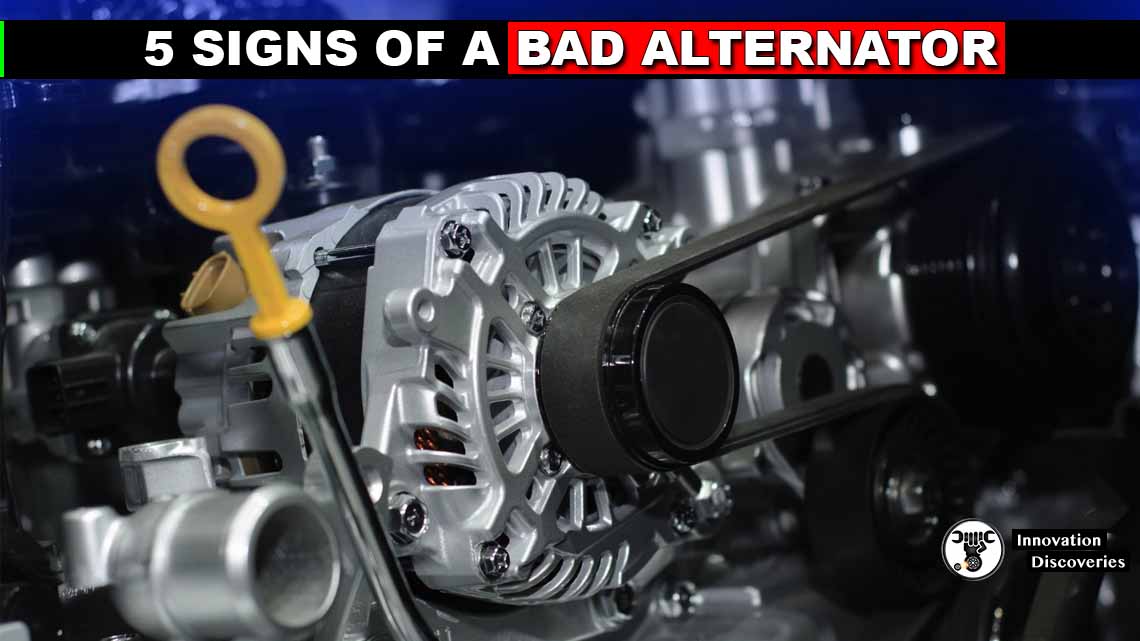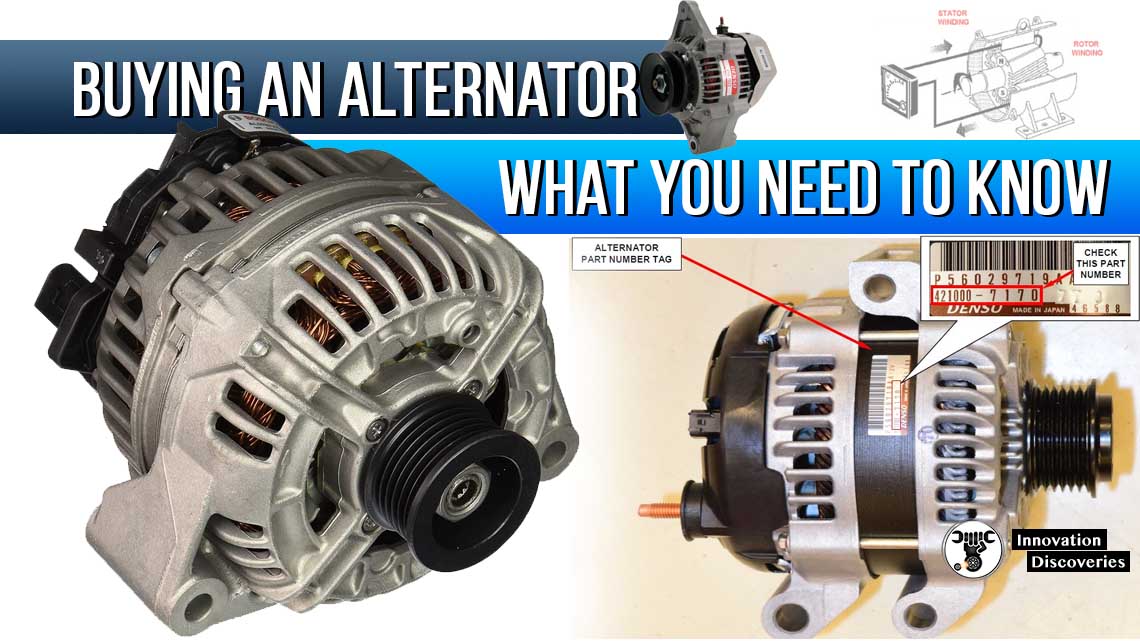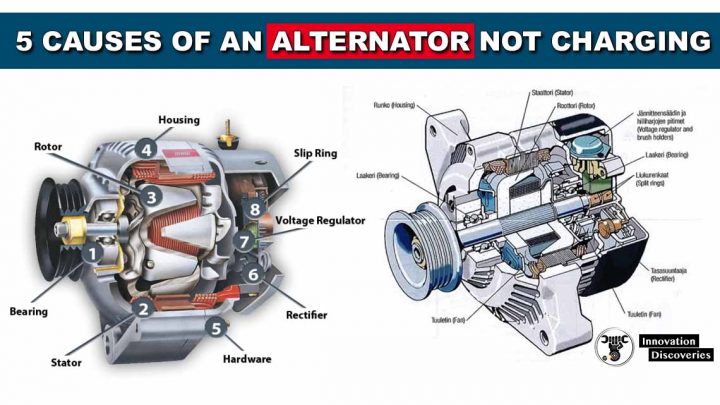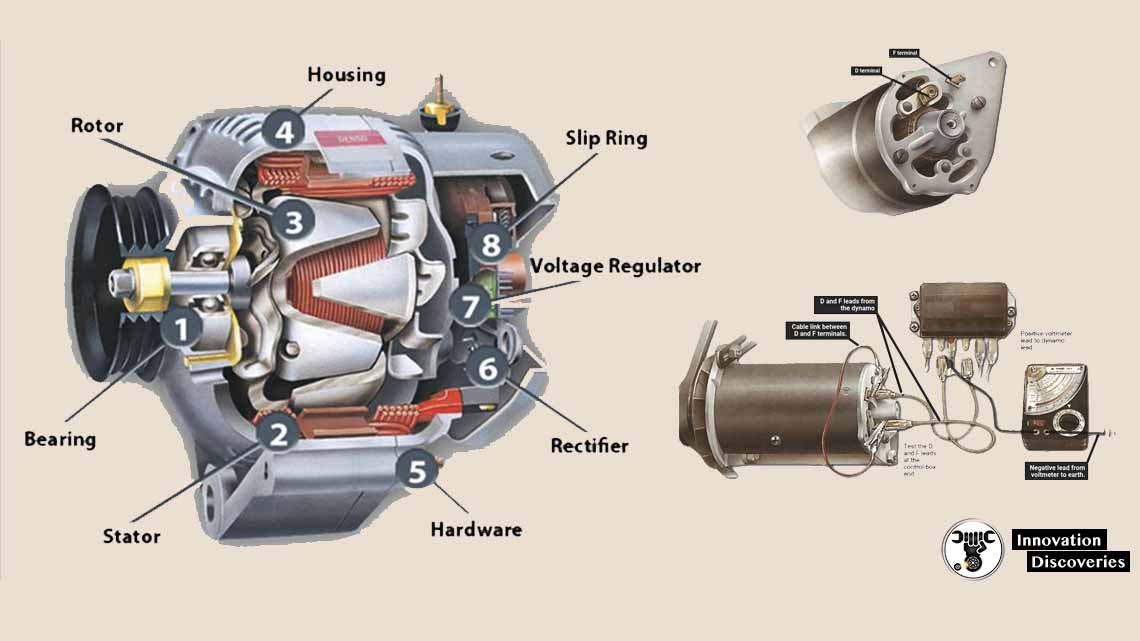
How an Alternator Works (Quick Overview):
Your alternator is a crucial part of the vehicle’s charging system. It converts mechanical energy from the engine (via a belt) into electrical energy to power your car’s electronics and recharge the battery. A healthy alternator typically produces 13.5 to 14.5 volts when the engine is running. Anything below that may point to a failing alternator.
Also, read – Car Alternator Functions and Symptoms of Failure
1: Flickering or Dimming Headlights
One of the first and most visible symptoms of a failing alternator is inconsistent headlight brightness. As the alternator struggles to provide steady voltage, headlights may flicker when you accelerate or dim when the engine is idling. This happens because the alternator isn’t maintaining the necessary voltage to keep electrical systems running efficiently.
Tech Tip:
Use a digital multimeter to measure voltage at the battery while the engine is running. A healthy alternator should show between 13.5 and 14.5 volts. If it’s under 13 volts, your alternator may be undercharging — a strong indicator of a failing unit.
Also, read – How To Tell If Starter Relay Is Bad? Four Common Symptoms
2: Weak or Dead Battery
Many car owners mistakenly blame the battery when their vehicle won’t start. However, if the alternator isn’t charging the battery correctly, the battery will gradually lose its charge, even if it’s brand new. Over time, this results in repeated jump starts or unexpected battery failures.
Tech Tip:
If your battery is under 2 years old and keeps dying, test your alternator instead. Some vehicles will log DTCs (Diagnostic Trouble Codes) related to charging system failures. Use an OBD-II scanner to check for codes like P0562 (System Voltage Low).
3: Strange Sounds (Grinding or Whining)
A failing alternator can emit unusual noises. Grinding usually points to worn-out bearings inside the alternator, while a high-pitched whining sound may indicate a problem with the voltage regulator or slipping drive belt.
Tech Tip:
Use a mechanic’s stethoscope (or a long screwdriver if you’re careful) to listen near the alternator housing. Any rough or metallic sounds could mean the internal components are worn and need replacing. Don’t ignore these noises—they often signal imminent failure.
4: Difficulty Starting the Car
A vehicle with a bad alternator might crank slowly or not at all. That’s because the battery doesn’t have enough power to turn the engine over after failing to get recharged. In some cases, your car might start but then die shortly after, especially if you’re using power-hungry accessories like lights or audio systems.
Tech Tip:
If your car struggles to start but improves after a jump, and you notice electrical issues while driving, it’s likely the alternator. A healthy system should maintain enough charge even after idling.
Also, read – The Procedure Of Jumpstarting A Car With A Bad Alternator
5: Electrical Failures or Malfunctions
Modern vehicles rely heavily on stable voltage for critical systems. When the alternator fails, you may experience dimming dashboard lights, malfunctioning infotainment systems, slow power window operation, or even warning lights flashing erratically. Some vehicles will display the battery warning light, sometimes marked as “ALT” or “GEN,” indicating a charging problem.
Tech Tip:
Electrical glitches that appear suddenly and affect multiple systems are usually alternator-related. The ECU (Engine Control Unit) monitors voltage and will often log errors or display alerts when it detects irregular supply from the alternator.
How to Test Your Alternator (DIY Tip):
If you’re comfortable working with basic tools, you can do a quick alternator test:
- Start your car and let it idle.
- Use a multimeter set to DC volts.
- Place the red probe on the battery’s positive terminal and the black on the negative.
- You should see a reading between 13.5V and 14.5V.
- Below 13V = undercharging
- Over 15V = possible voltage regulator issue
⚠️ Tip: Always be cautious when working near a running engine.
Read More:

READ: STARTING AND CHARGING SYSTEMSVisit Forum
Visit Our Friendly Website








3 Comments